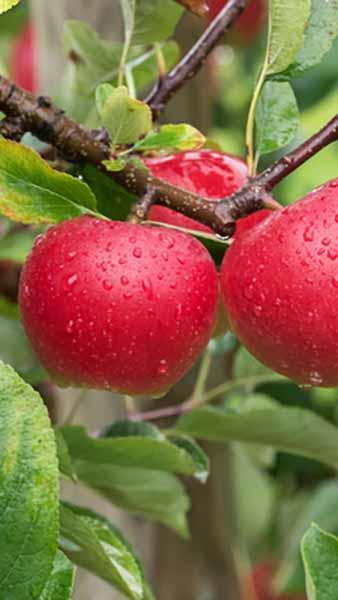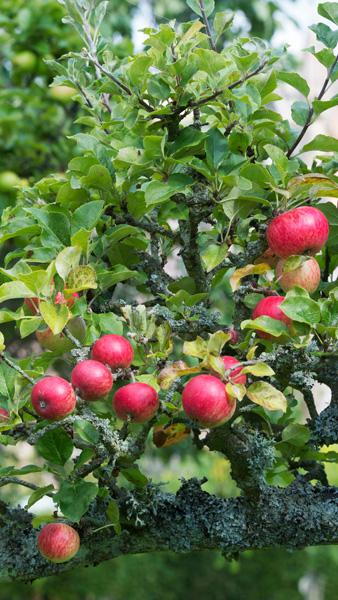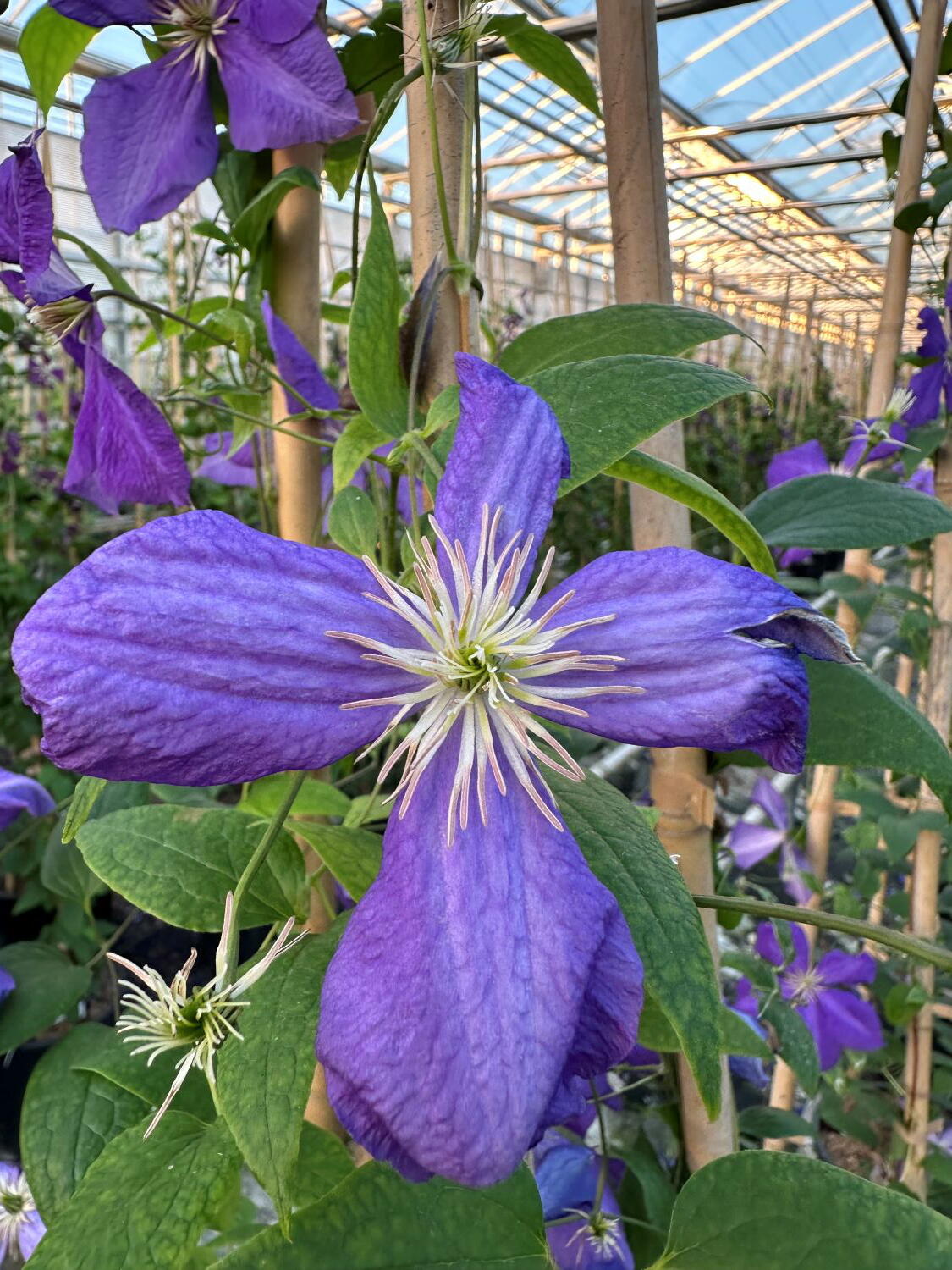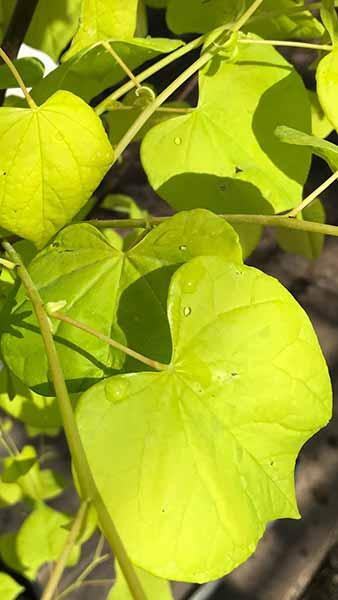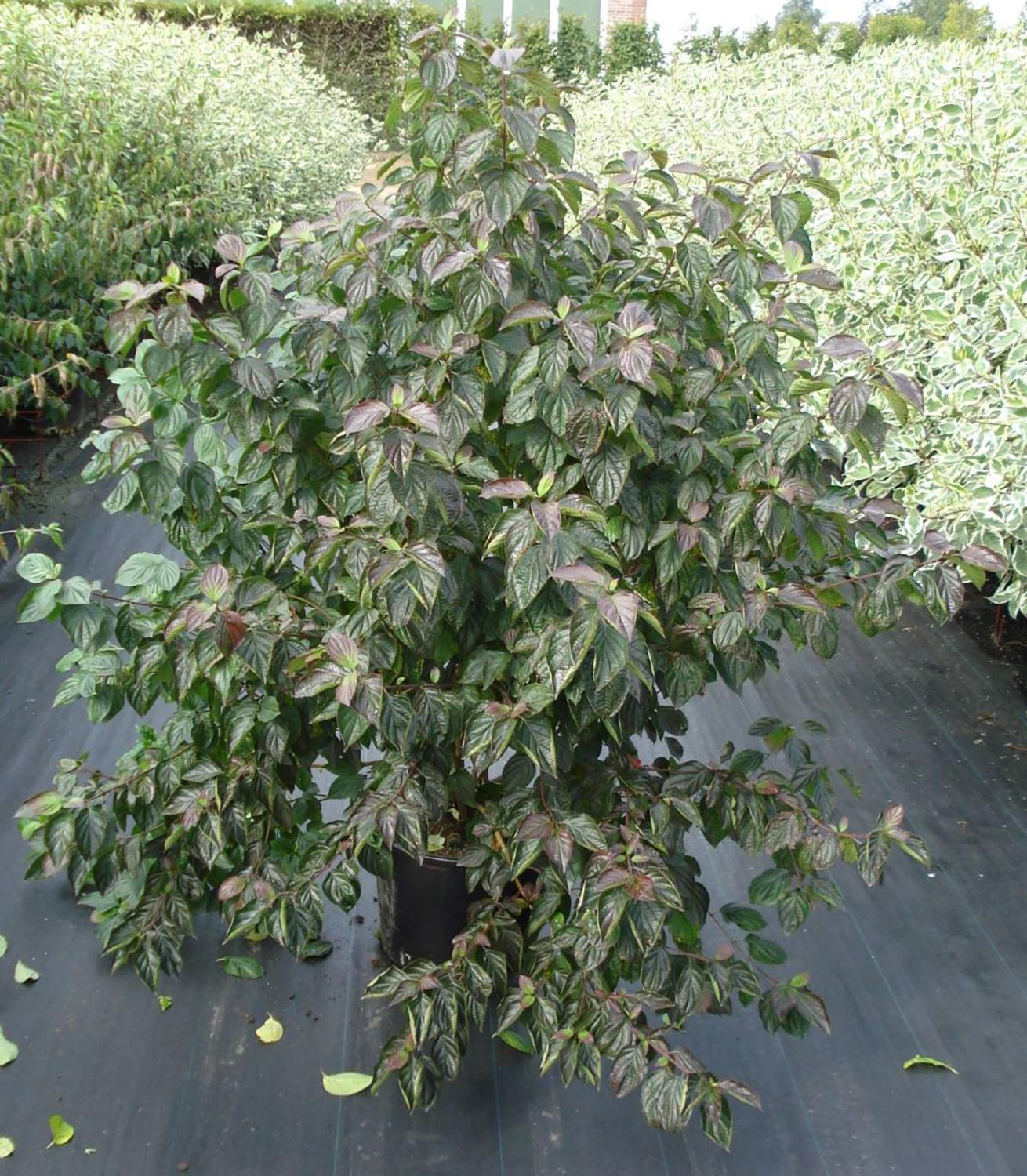Clematis Jackmanii Purple Flowering Climber - AGM
Clematis 'Jackmanii' (Jackman’s Clematis) is a popular and widely grown ornamental climber, admired for its prolific display of large, velvety purple blooms. First introduced in the 19th century, this classic variety has stood the test of time due to its vigorous growth, stunning floral display, and adaptability. It is an excellent choice for adding vertical interest to gardens, adorning trellises, fences, and walls with a cascade of vibrant colour during the summer months.Jackman’s Clematis is a deciduous, woody-stemmed climber with a robust and vigorous growth habit. This climber produces an abundance of striking flowers, each measuring 10 to 15 cm (4 to 6 inches) across. The blooms consist of four to six broad sepals, showcasing rich, deep purple hues with a velvety texture and contrasting creamy-yellow stamens at the centre. The flowering period extends from mid to late summer, offering a long-lasting burst of colour. Its dark green, pinnate leaves provide an attractive backdrop that enhances the brilliance of the flowers.How Hardy is Clematis Jackmanii:Clematis 'Jackmanii' is winter-hardy throughout the UK. Height and Spread of Clematis Jackmanii:At maturity, Jackmanii can reach a height of 3 to 4 meters (10 to 13 feet) with a spread of about 1 to 1.5 meters (3 to 5 feet). Its rapid growth habit makes it ideal for quickly covering vertical structures.How To Use Clematis Jackmanii:This versatile climber is perfect for adding vertical interest to various garden settings. It thrives on trellises, pergolas, fences, and arbors, where its vibrant blooms create a dramatic focal point. Jackmanii can also be trained to grow through shrubs or small trees, adding a splash of color to mixed borders. It pairs beautifully with other climbers, such as roses, for a romantic, cottage garden look. Additionally, it performs well in large containers, making it suitable for patios and balconies.How To Care For Clematis Jackmanii:Plant Clematis Jackmanii in full sun to partial shade, ensuring that the roots are kept cool and shaded while the vine enjoys plenty of sunlight. It prefers well-drained, fertile soil enriched with organic matter. Regular watering is essential, especially during dry spells, but avoid waterlogging. Mulch around the base to retain moisture and regulate soil temperature. Prune in late winter or early spring, as Jackmanii belongs to pruning group 3, which benefits from hard pruning to about 30 cm (12 inches) above ground level annually to encourage vigorous new growth and abundant flowering.
